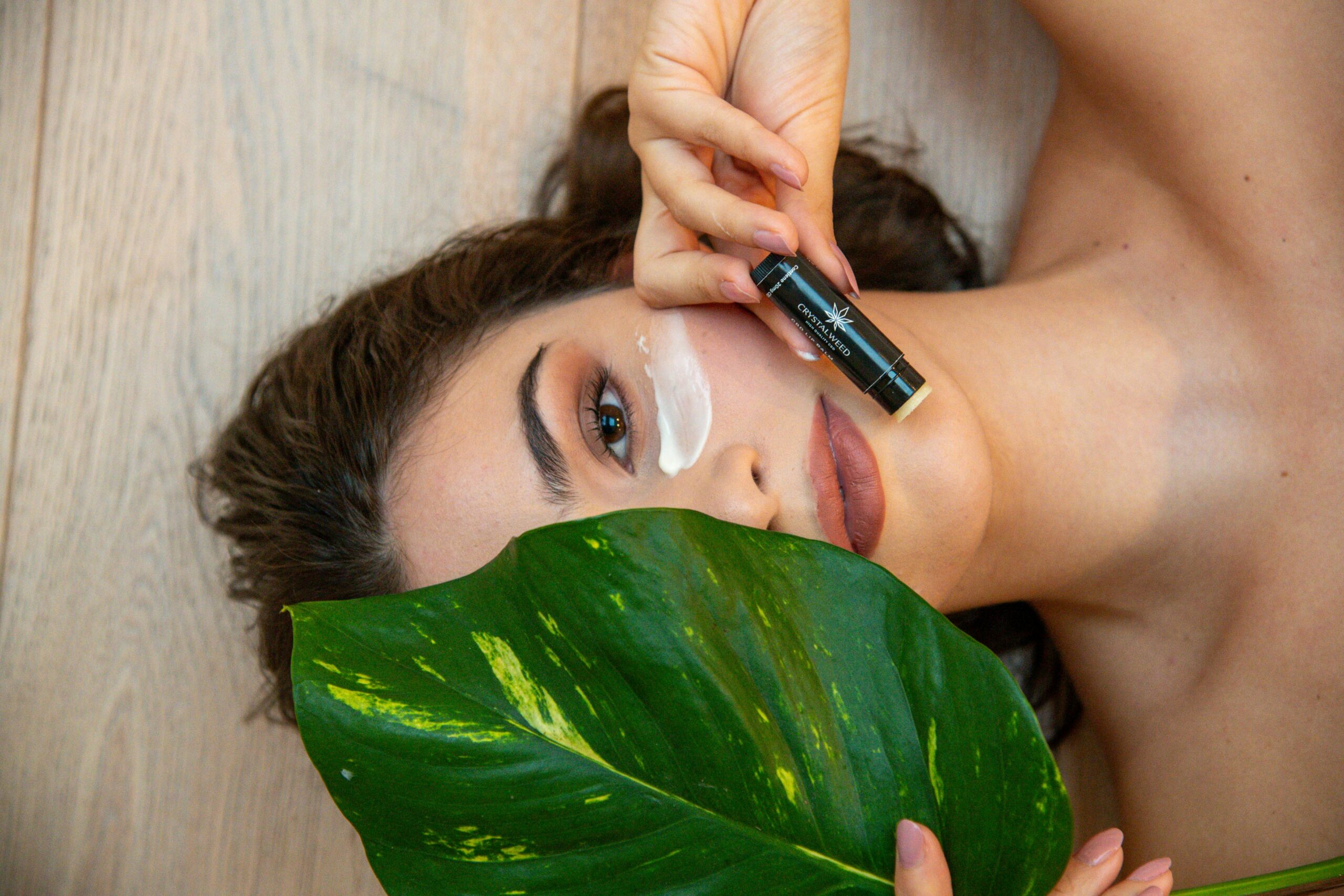1. Why Sustainable Beauty Trends Matter in 2025
Consumers demand transparency, and the beauty industry is pivoting. According to Vogue, 76% of shoppers want brands to reduce packaging waste and use ethically sourced ingredients. This shift drives the rise of sustainable beauty trends, blending eco-friendly DIY hacks with mindful product curation.
If you loved our guide on DIY spa treatments 2025, get ready to level up with earth-friendly routines that care for skin—and the planet.
2. DIY Zero-Waste Skincare Recipes
Crafting your own products is a powerful way to cut down on plastic waste and avoid questionable ingredients. Below are three easy, zero-waste recipes to revamp your skincare routine.
2.1 Solid Cleansing Bars
Intro: Ditch plastic bottles by making a gentle, waterless cleansing bar at home.
- Why It Works:
- Eliminates single-use plastic
- Concentrated formulas last longer
- No preservatives needed if stored properly
Ingredients & Steps:
- Melt Phase:
- ½ cup cold-process soap base (recycled soap scraps work great)
- 2 tbsp coconut oil (antibacterial, hydrating)
- 1 tbsp shea butter (rich in fatty acids)
- Additives:
- 1 tsp matcha powder (antioxidants, imparts a gentle exfoliation)
- 10 drops tea tree essential oil (anti-acne, clarifies)
- Process:
- Gently heat soap base and oils in a double boiler.
- Stir in matcha and essential oil.
- Pour into a silicone mold.
- Let solidify for 2 hours, then unmold and air-cure for 24 hours.
Your face will feel refreshed and squeaky-clean—no plastic pouch required!
3. Upcycled Packaging: Reuse, Refill, Reimagine
Reducing waste isn’t just about DIY; it also means adopting sustainable packaging solutions. Brands are embracing reusable glass, aluminum, and compostable wrappers.
3.1 Refillable Serums & Creams
Intro: Many clean beauty brands now offer refillable options—simply return your empty glass bottle or tin and save on your next purchase.
- Why It Works:
- Cuts 60–70% of plastic waste over a product’s lifetime (Harper’s Bazaar reports refill models reduce overall carbon footprint).
- Encourages brand loyalty through subscription or reward programs.
Top Refillable Picks:
- Frost + Loom Biome Barrier (Canada): Comes in a reusable glass jar with compostable lid.
- Ethical Elements Multi-Stick (UK): Aluminum case designed to last years—buy refills only.
- Sustain+. Glass Dropper Serums (USA): Offers 25% discount on refills; packaging is post-consumer recycled glass.
Ready to make the switch? Keep your empty jars and tins for a discount on your next eco-friendly haul!
4. Eco-Friendly DIY Body Care Essentials
Body care contributors to landfill waste—think single-use shower gels and synthetic scrubs. 2025 brings DIY body care using in-language, biodegradable materials.
4.1 Rice Bran & Coffee Grounds Body Scrub
Intro: Give new life to common pantry items by creating a body scrub that exfoliates, firms, and smells amazing.
- Why It Works:
- Rice bran: Rich in antioxidants and vitamins B and E; brightens and smooths (Green Beauty Community highlights rice bran’s gentle exfoliation).
- Coffee grounds: Stimulate circulation and combat cellulite; antioxidants fight free radicals (USA dermatologists often recommend coffee scrubs for bumpy skin).
Recipe:
- Mix Dry Ingredients:
- ½ cup rice bran
- ½ cup used coffee grounds (let them dry overnight)
- Add Moisturizers:
- ¼ cup sweet almond oil (light, hypoallergenic)
- 10 drops orange essential oil (uplifting, promotes collagen)
- Usage:
- In the shower, scoop a handful and scrub in circular motions from feet to stomach, focusing on rough areas (knees, elbows).
- Rinse clean and pat dry. Follow with a light body oil for added hydration.
Swap your store-bought scrubs for this eco-friendly powerhouse—your skin (and the environment) will thank you!
5. Sustainable Hair Treatments with Kitchen Staples
Haircare packaging often uses hard-to-recycle plastics. 2025 trends center on DIY masks and minimal-packaging products, ensuring luscious locks without waste.
5.1 Banana & Honey Strengthening Hair Mask
Intro: Bananas are full of potassium, vitamins, and natural oils—key nutrients to strengthen and soften hair.
- Why It Works:
- Banana: Provides moisture and elasticity (UK stylists praise its conditioning power).
- Honey: Acts as a humectant, locking in moisture and imparting shine.
- Yogurt or Coconut Milk (optional): Adds protein and gentle cleansing properties.
Recipe:
- Mash & Mix:
- 1 ripe banana, mashed until smooth
- 2 tbsp honey
- (Optional) 2 tbsp plain yogurt or coconut milk
- Application:
- Dampen hair, apply mask from mid-lengths to ends.
- Cover with a shower cap and warm towel for 20 minutes to encourage absorption.
- Rinse & Style:
- Rinse thoroughly with lukewarm water. Shampoo lightly if needed.
- Towel-dry, apply a small amount of DIY haircare natural ingredients serum (from our previous guide).
Keep your strands strong and vibrant—no plastic jar required!
6. Must-Have Fair-Trade & Cruelty-Free Picks
Sometimes DIY isn’t enough—or you need a quick grab-and-go solution. We’ve vetted top brands that champion sustainable practices, ethical sourcing, and recyclability.
6.1 Clean Face Oil:
- Dive In Beauty’s Good for You Face Oil (USA):
- Certified cruelty-free and cruelty-free–certified by PETA.
- Uses 100% post-consumer recycled glass for packaging.
6.2 Shampoo Bar:
- Ethique’s “Heali Kiwi” Bar (UK):
- 80 washes per bar, zero-waste packaging.
- Made with sustainably sourced shea butter, cocoa butter, and essential oils.
6.3 Refillable Deodorant:
- Native Refill Kit (Canada/USA):
- Subscription program sends 95% less plastic waste compared to standard deodorant sticks.
- Aluminum tins fully recyclable.
Swap out a single product for a sustainable option and see your bathroom’s plastic count plummet.
7. Infographic: Key Statistics on Sustainable Beauty Trends
Below is a quick chart highlighting consumer priorities and green wins in 2025—so you know exactly where to invest your time and money.
Final Tips for Eco-Friendly Beauty Routines
- Store DIY Products Properly: Use glass or aluminum containers to prolong shelf life—avoid plastic.
- Look for Certifications: Choose products labeled “USDA Organic,” “Fair Trade,” “PETA Cruelty-Free,” or “Carbon Neutral.”
- Recycle & Compost: Rinse glass jars before recycling; compost biodegradable ingredients (coffee grounds, fruit peels) rather than tossing in landfill.
- Support Local & Small Brands: Smaller batches often mean higher ethical standards and less overproduction.
- Educate Yourself: Stay informed on ingredient sourcing by visiting brand websites or nonprofit watchdogs (e.g., Environmental Working Group).
Ready to continue your green beauty journey? Explore our next article on skincare trends 2025 for more DIY routines and glow-boosting tips.
FAQs
Q1: What are the most impactful sustainable beauty swaps I can make?
A1: Start with refillable or bar products—shampoo bars, solid cleansers, and refillable serums drastically cut single-use plastic. Next, replace synthetic fragrance items with DIY zero-waste recipes (e.g., solid cleansing bars, sugar scrubs).
Q2: How can I ensure my DIY formulas remain free of bacteria?
A2: Use sterilized tools and jars (boil or run through dishwasher). Incorporate natural preservatives like vitamin E oil (antioxidant) and grapefruit seed extract. Store products in cool, dark places; discard if odor or texture changes.
Q3: Are eco-certifications really trustworthy?
A3: Most reputable marks (USDA Organic, COSMOS, Fair Trade, PETA Cruelty-Free) require third-party audits and strict guidelines. To be extra sure, cross-reference brand claims on sites like Environmental Working Group or Cruelty Free Kitty.
Q4: What ingredients should I avoid for a truly green routine?
A4: Steer clear of microbeads, PEGs (polyethylene glycol), mineral oil (petroleum-derived), and palm oil (unless certified sustainable). Avoid synthetic fragrances and preservatives like parabens and phthalates, which may harm ecosystems.
Q5: How often should I make these DIY products?
A5: Small, fresh batches work best:
- Solid cleansing bars: Make 2–3 at a time; use within 6-12 months.
- Body scrubs & hair masks: Prepare weekly or biweekly based on need.
- Serums & oils: Mix 1-month supply; check for rancidity (natural oils can go bad if exposed to heat/light).

Hi! I’m Katia Luján, an SEO and Content Marketing expert with over 10 years of experience helping websites grow organically and get approved by Google AdSense.
I’ve worked in Google’s Trust & Safety team for AdSense and have helped more than 100 websites comply with monetization policies. Currently, I’m the strategist behind Buzzlix—creating SEO-optimized, high-quality content on beauty, skincare, and self-care.
I’m passionate about empowering others with actionable, sustainable, and accessible beauty content.


Leave a Reply